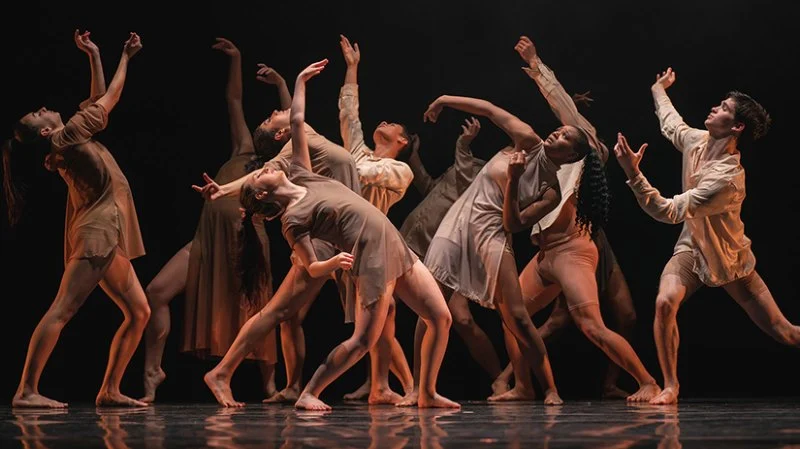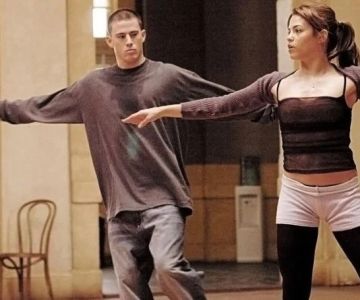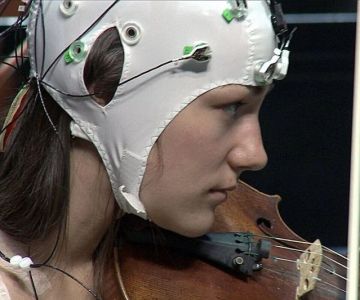
- 1-Early Roots of Contemporary Dance
- 2-Key Figures in the Development of Contemporary Dance
- 3-Evolution and Major Movements in US Contemporary Dance
- 4-Impact of Contemporary Dance on American Culture
- 5-Modern Contemporary Dance and Its Future
1. Early Roots of Contemporary Dance
The history of contemporary dance in the US traces its origins back to the early 20th century, when dancers and choreographers began to move away from the strict, structured forms of ballet and tap. Influenced by modernist movements in the arts, early contemporary dance emphasized freedom of expression and body movement that reflected individual emotions and thoughts.
Before the rise of contemporary dance, the dance scene in the US was dominated by classical ballet, which had specific forms and rules for movement. Contemporary dance evolved as a reaction against these rigid structures. It sought to incorporate a wider range of movement, including improvisation, and made use of the floor as an active part of dance, instead of just a space to stand on.
Early pioneers such as Isadora Duncan and Ruth St. Denis challenged the traditional forms of dance by exploring new ideas and allowing for more personal expression. Duncan, for example, often performed barefoot and used flowing, natural movements inspired by ancient Greek art. These early efforts laid the foundation for what would become contemporary dance in the US.

Class Act Performing Arts / class act performing arts
EdgewaterAnne Arundel CountyMaryland
161 Mitchells Chance Rd, Edgewater, MD 21037, USA
2. Key Figures in the Development of Contemporary Dance
The development of contemporary dance in the US is closely tied to several key figures who helped shape the art form into what it is today. These figures were instrumental in moving away from classical dance traditions and laying the groundwork for the modern dance movement:

The Turning Pointe / turning pointe dance studio
ColumbiaRichland CountySouth Carolina
1030 Harden St, Columbia, SC 29205, USA
2.1 Martha Graham
Martha Graham is widely regarded as one of the most important figures in the development of contemporary dance. Known for her unique approach to movement, which emphasized the expression of inner emotions through physicality, Graham developed a technique called “contract and release.” This technique became a fundamental element of modern dance and influenced countless dancers and choreographers after her.
2.2 Doris Humphrey
Doris Humphrey, another pivotal figure, worked alongside Martha Graham and was a key force in shaping modern dance. Humphrey developed the concept of “fall and recovery,” which explored the dynamic relationship between gravity and the body. Her focus on breath and the body's natural movements helped define contemporary dance as an art form that emphasized emotional and physical expression.
2.3 Alvin Ailey
Alvin Ailey brought a new dimension to contemporary dance by incorporating African American cultural elements into his choreography. His company, the Alvin Ailey American Dance Theater, became known for its powerful performances and expressive storytelling. Ailey's work, particularly his iconic piece “Revelations,” explored themes of spirituality, suffering, and joy, resonating with audiences worldwide.
3. Evolution and Major Movements in US Contemporary Dance
Contemporary dance in the US has evolved significantly over the past century, marked by various movements that reflected changing social, cultural, and artistic trends. Each of these movements contributed to the diverse nature of contemporary dance today:
3.1 The Birth of Modern Dance
The first half of the 20th century saw the birth of modern dance, a movement that emphasized individual expression over traditional techniques. Dancers like Graham and Humphrey explored themes of emotional intensity, and their choreography often delved into psychological and physical conflicts. Modern dance gave performers the freedom to express more personal narratives and feelings.
3.2 Postmodern Dance
The 1960s and 1970s brought about postmodern dance, which rejected many of the formalized aspects of modern dance. This movement, championed by artists such as Merce Cunningham and Trisha Brown, emphasized experimentation with new forms of movement, including the use of everyday gestures and the incorporation of multimedia into performances. Postmodern dance opened the door for greater experimentation and laid the foundation for contemporary dance as we know it today.
3.3 The Rise of Dance in Popular Culture
In the late 20th and early 21st centuries, contemporary dance continued to evolve by incorporating influences from hip-hop, jazz, and other popular dance forms. The rise of dance in popular culture, particularly with the advent of television shows like "So You Think You Can Dance," brought contemporary dance into the mainstream. This increased visibility helped contemporary dance gain recognition as an art form that could appeal to diverse audiences.
4. Impact of Contemporary Dance on American Culture
Contemporary dance has had a profound impact on American culture, influencing not just the art world but also social movements and entertainment. The themes explored through contemporary dance, such as personal freedom, social justice, and identity, have allowed dancers to address important cultural and political issues through their performances.
4.1 Dance as a Form of Protest and Social Change
Contemporary dance has long been used as a platform for social commentary. For example, Alvin Ailey's “Revelations” addressed the African American experience, while other works have dealt with gender, race, and political themes. Contemporary dance continues to be a medium for protest and a tool for raising awareness about important social issues.
4.2 Influence on Other Art Forms
The innovations of contemporary dance have also influenced other art forms, such as theater, film, and visual arts. The integration of movement and multimedia in performances has led to collaborations across artistic disciplines, broadening the scope and reach of contemporary dance. Its influence can be seen in music videos, commercials, and stage performances, helping to bring dance into everyday life.
5. Modern Contemporary Dance and Its Future
Today, contemporary dance continues to evolve, with choreographers and performers exploring new technology, digital media, and cross-disciplinary collaboration. As contemporary dance continues to reflect the diversity and complexities of modern life, it will remain a powerful form of artistic expression and an important part of the global cultural landscape.
5.1 The Role of Technology in Contemporary Dance
As technology advances, so does contemporary dance. Choreographers are now integrating digital projections, motion capture, and virtual reality into their performances, pushing the boundaries of what is possible in dance. This fusion of technology and dance allows for new forms of storytelling and interactive experiences that engage audiences in innovative ways.
5.2 The Globalization of Contemporary Dance
The internet has allowed contemporary dance to transcend borders. Today, dance companies from around the world share their work online, and social media platforms have made it easier for dancers to connect with each other globally. This globalization of contemporary dance has led to greater cross-cultural exchange and experimentation, ensuring that contemporary dance remains dynamic and ever-changing.







 Dove Dance School4.0 (18 reviews)
Dove Dance School4.0 (18 reviews) Oaks Park Dance Pavilion4.0 (154 reviews)
Oaks Park Dance Pavilion4.0 (154 reviews) Sreepadam Performing Arts and Cultural Education (Divyaa Unni)5.0 (14 reviews)
Sreepadam Performing Arts and Cultural Education (Divyaa Unni)5.0 (14 reviews) Frances Lea Dance Center4.0 (31 reviews)
Frances Lea Dance Center4.0 (31 reviews) B.B. Dance Productions5.0 (9 reviews)
B.B. Dance Productions5.0 (9 reviews) Kinston Dance Academy5.0 (11 reviews)
Kinston Dance Academy5.0 (11 reviews) What is Whacking? Arm-Based Disco Dance Movement
What is Whacking? Arm-Based Disco Dance Movement The Best Dance Workouts for People Who Get Bored at the Gym
The Best Dance Workouts for People Who Get Bored at the Gym Why I Switched from Tap to Contemporary Dance – My Personal Journey and Lessons Learned
Why I Switched from Tap to Contemporary Dance – My Personal Journey and Lessons Learned What is a Dance Workshop and Should You Take One? | Benefits of Dance Workshops
What is a Dance Workshop and Should You Take One? | Benefits of Dance Workshops What is Irish Dance? Exploring Soft Shoe and Hard Shoe
What is Irish Dance? Exploring Soft Shoe and Hard Shoe My Story of Starting My Own Dance Workshop Series — What I Learned
My Story of Starting My Own Dance Workshop Series — What I Learned